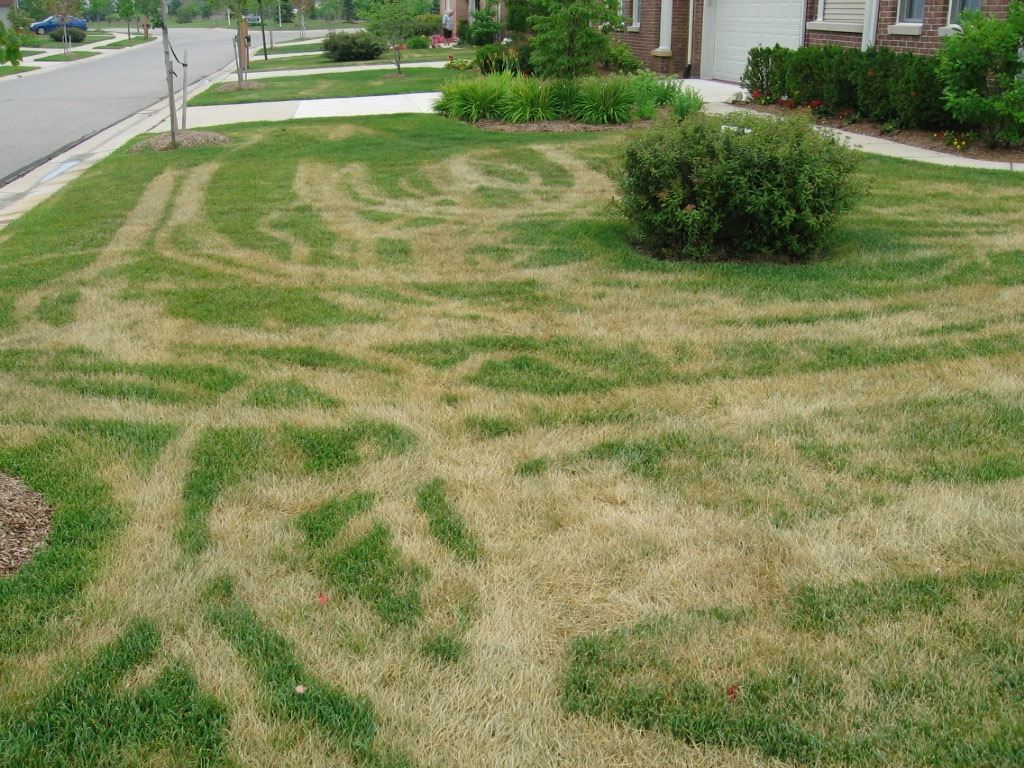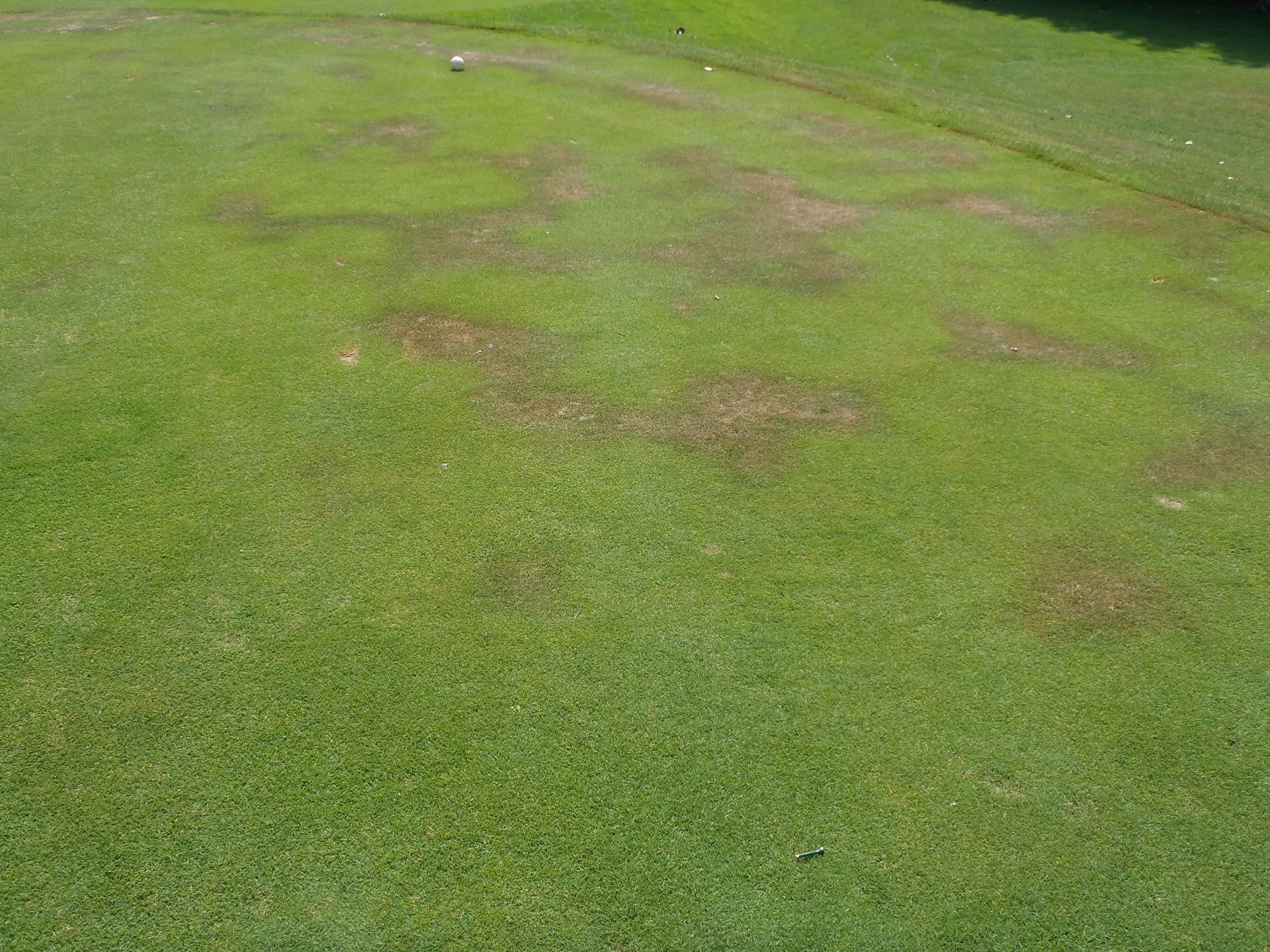It’s already been a crazy weather year with unusually warm temperatures in February followed by more seasonable temperatures in March and excessive rainfall in April and May. June has started nicely but the forecast in the next week is going to leave not only us but the turf feeling oppressed with high temperatures forecast in the high 80’s and low 90’s combined with high humidity. Here are some simple reminders as the heat ramps up this weekend.
1. Check the Irrigation System
For the most part irrigation systems have been resting this year as Mother Nature has blessed us with cool temperatures and adequate rainfall. Everyone has certainly used their irrigation system by this point in the year but it might not be a bad idea to go out and actually observe the system operating in critical areas. Any inefficiencies, misaligned, or malfunctioning heads may have been disguised by rainfall to this point but that will not be the case in the next week.
Areas that reveal poor irrigation coverage first are typically edges of fairways, banks of greens, tees, and bunkers, and the rough. Many of these areas are also high traffic areas that are subject to another stress, compaction.
2. Syringing
In an effort to compensate for poor irrigation coverage and improve water management, hand watering is commonplace on golf courses. In Michigan, we are accustomed to syringing greens during periods of drought but usually not fairways. Dr. Vargas has reminded me that in Mediterranean climates like southern Europe where it does not rain from the middle of May until the middle of September and the temperatures are in the 90’s every day, the superintendent will usually have 3 or more people assigned every day to syringe fairways. When we have similar conditions it may become necessary to syringe fairways, we’re not necessarily talking about the hose crew but rather a short irrigation cycle. It is commonly perceived that noon is the warmest part of the day, when in reality it is often later in the day around 4 to 6 p.m. Syringing late in the afternoon might make the difference this year between healthy, heat stressed turf.

3. Heat Tracking
Heat tracks will be an issue on home lawns and golf courses. Anytime you put traffic from a cart, mower, or spreader on turf that is nearing the wilting point or has already wilted, you will likely see a track in the following days or week. If possible, avoid mowing during the heat of the afternoon.

4. Wetting Agents
Wetting agents are critical tools in the arsenal for alleviating localized dry spot but even with wetting agents hand watering may be necessary if it stays hot and dry.

5. Scout and Plan for Diseases
High temperatures will be accompanied by high humidity and warm night-time temperatures. Conditions may become favorable for dollar spot, brown patch and even Pythium blight. Most superintendents treat for dollar spot and brown patch on a regular basis. Pythium blight is not normally treated for on a regular basis in Michigan but when day time high temperatures are in the 90’s and night temperatures above 70°F following a rain, chances are optimal for a Pythium blight outbreak. If caught in time, the turf should recover from the dollar spot, brown patch and Pythium blight, which are primarily foliar diseases.
Crown rot anthracnose (CRA) can also be a problem in the warm weather on annual bluegrass greens especially if the warm weather is accompanied by excess moisture from frequent rains. Wide spread resistant of Colletotrichum cereale, the CRA fungus, to the benzimidazole and the Qo I fungicides has been reported. Alternative fungicide chemistries should used to control CRA. Adequate nitrogen fertility is also necessary the control this disease.
Summer patch is becoming an ever-increasing problem. The early 65 and 75-degree models for scheduling fungicide applications that worked so well for so many years have not worked that well recently in our research trials. We are now suggesting fungicide applications the first of June, July, and August. The products of choice should be the DMI fungicides and they should be watered into the top inch of the turf where the elongated crown of the turfgrass plant is. If you can keep the crown of the plant healthy the plant will survive no matter how many roots become infected.
6. Hydrate
Just a reminder to keep your self hydrated during the hot weather. There are bound to be some long days and if you’re acclimated to temps in the 60’s and 70’s, temps in the 90’s may cause us to wilt as much as the turf.